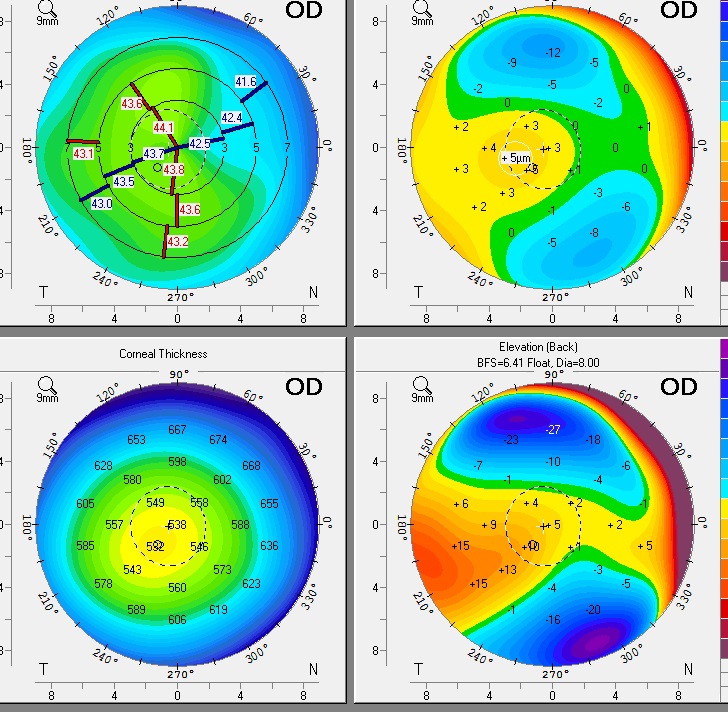Corneal topography and higher-order aberrations in patients with type 2 diabetes mellitus
Medical hypothesis, discovery & innovation in optometry,
Vol. 4 No. 1 (2023),
4 April 2023
,
Page 7-16
https://doi.org/10.51329/mehdioptometry168
Abstract
Background: Changes in blood sugar levels cause alterations in the anterior segment and retina of the eye. This study was aimed at evaluating corneal topography, aberrometry, and corneal asphericity in patients with treatment-naive type 2 diabetes mellitus (T2DM).Methods: Participants with treatment-naive T2DM were enrolled in this cross-sectional study. The inclusion criteria were glycated hemoglobin A1c (Hb A1c) greater than or equal to 7.5% and absence of other ocular or systemic diseases. Patients who refused to participate or had a history of topical or systemic steroid use, hyperlipidemia, hypertension, anemia, prior ocular disorder or surgery, diabetic retinopathy, glaucoma, cataract, active ocular inflammatory or infectious disease, or contact lens use were excluded. All participants underwent a comprehensive ophthalmic examination. The Pentacam HR Scheimpflug tomography system (Pentacam High Resolution; Oculus, Wetzlar, Germany) was used to measure the anterior-segment parameters.
Results: Sixty eyes of 30 patients with a male-to-female ratio of 1:1 were included; the mean (standard deviation [SD]) age and Hb A1c were 51.63 (6.73) years and 8.82% (1.31%), respectively. The mean (SD) values of central corneal thickness, root mean square (RMS) of total aberration, RMS of lower-order aberrations, RMS of higher-order aberrations, spherical aberration, 0° coma, 90° coma, flat anterior keratometry (K), steep anterior K, mean anterior K, anterior topographic astigmatism, flat posterior K, steep posterior K, mean posterior K, posterior topographic astigmatism, anterior corneal asphericity, and posterior corneal asphericity were 540.22 (24.47) µm, 1.72 (0.73) µm, 1.63 (0.73) µm, 0.51 (0.17) µm, + 0.31 (0.09) µm, - 0.06 (0.15) diopters (D), 0.003 (0.21) D, 43.87 (1.49) D, 44.69 (1.50) D, 44.28 (1.44) D, + 0.82 (0.83) D, - 6.25 (0.27) D, - 6.55 (0.31) D, - 6.40 (0.28) D, - 0.30 (0.15) D, - 0.32 (0.12) Q-value, and - 0.47 (0.17) Q-value, respectively.
Conclusions: We presented the mean values of Pentacam parameters for aberrometry, keratometry, and corneal asphericity in patients with treatment-naive T2DM. These values could serve as a baseline for prospective monitoring of the ocular health status of this cohort and for comparison with future cohorts of patients with well-controlled T2DM. Further studies are required to assess the presence and applicability of ocular changes following intensive blood glucose control in T2DM and further understand the related pathophysiology.
Keywords:
- corneal wavefront aberrations
- diabetes mellitus
- type 2 diabetes mellitus
- type 1 diabetes mellitus
- hyperglycemias
- glycated hemoglobin A1c
- Hb A1c
- corneal topographies

- Abstract Viewed: 0 times
- Full Text PDF Downloaded: 0 times